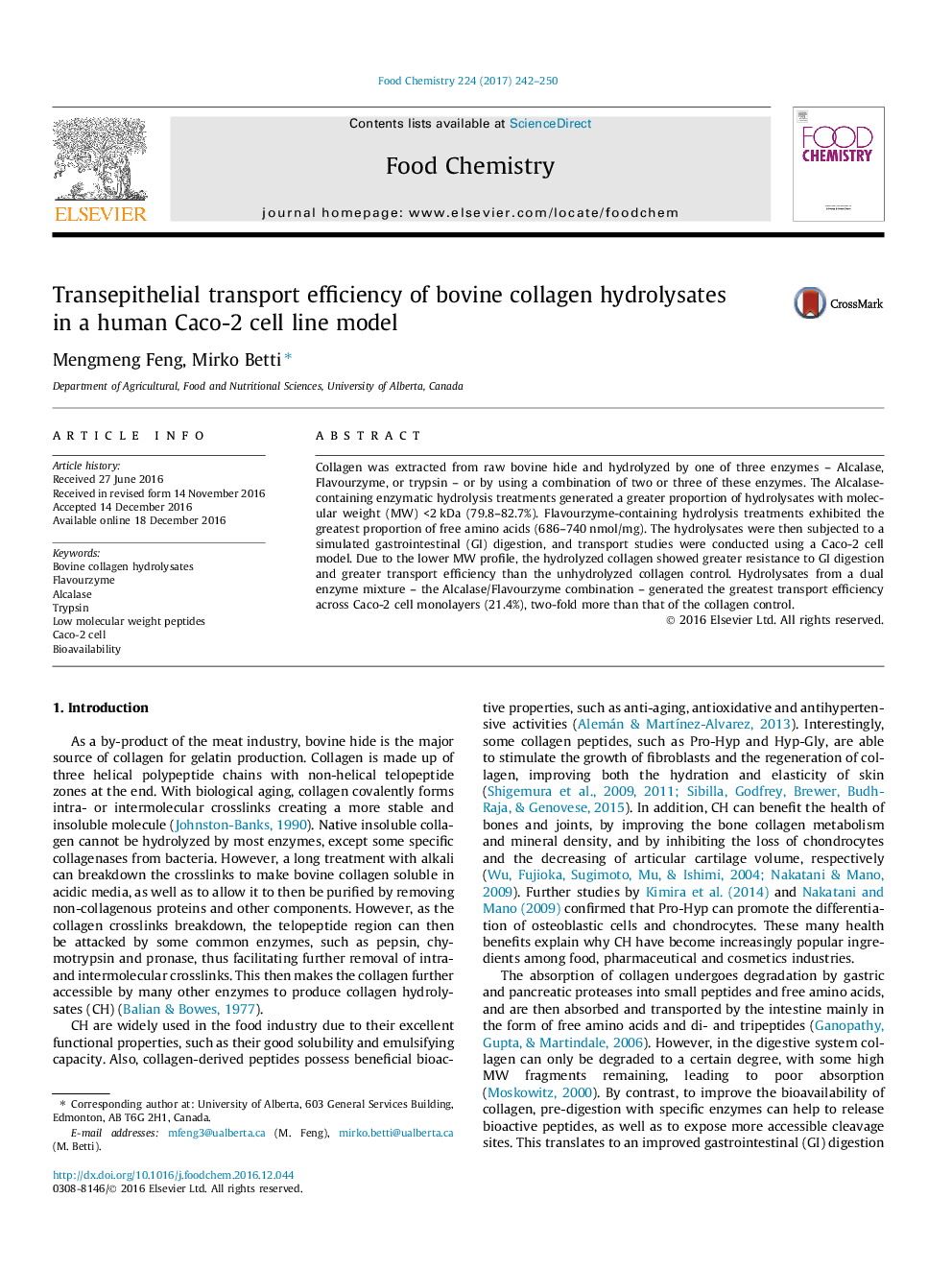| کد مقاله | کد نشریه | سال انتشار | مقاله انگلیسی | نسخه تمام متن |
|---|---|---|---|---|
| 5133562 | 1492068 | 2017 | 9 صفحه PDF | دانلود رایگان |

- Collagen hydrolysates were produced by Alcalase, Flavouzyme, and trypsin.
- Transepithelial transport was studied in a Caco-2 cell line.
- Alcalase-Flavourzyme (AF) treatment yielded very low molecular weight peptides.
- The transepithelial transport efficiency was the greatest for the AF treatment.
Collagen was extracted from raw bovine hide and hydrolyzed by one of three enzymes - Alcalase, Flavourzyme, or trypsin - or by using a combination of two or three of these enzymes. The Alcalase-containing enzymatic hydrolysis treatments generated a greater proportion of hydrolysates with molecular weight (MW) <2Â kDa (79.8-82.7%). Flavourzyme-containing hydrolysis treatments exhibited the greatest proportion of free amino acids (686-740Â nmol/mg). The hydrolysates were then subjected to a simulated gastrointestinal (GI) digestion, and transport studies were conducted using a Caco-2 cell model. Due to the lower MW profile, the hydrolyzed collagen showed greater resistance to GI digestion and greater transport efficiency than the unhydrolyzed collagen control. Hydrolysates from a dual enzyme mixture - the Alcalase/Flavourzyme combination - generated the greatest transport efficiency across Caco-2 cell monolayers (21.4%), two-fold more than that of the collagen control.
Journal: Food Chemistry - Volume 224, 1 June 2017, Pages 242-250